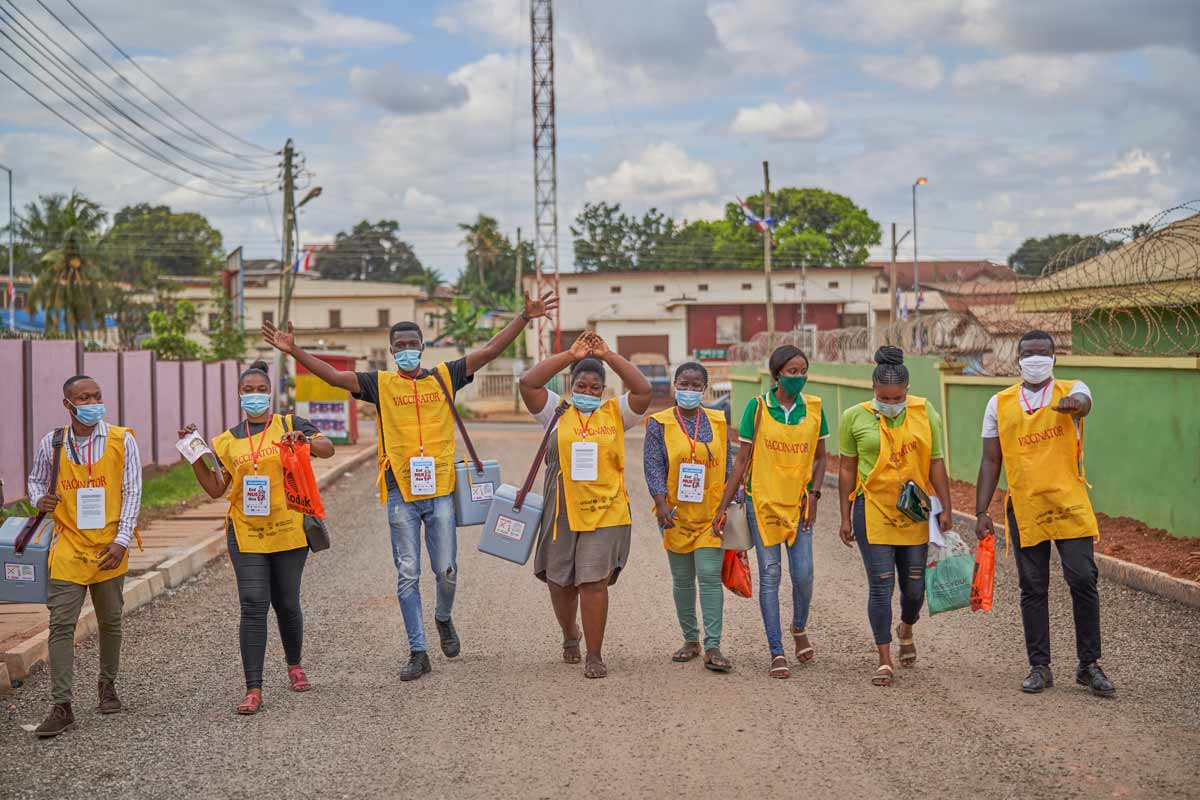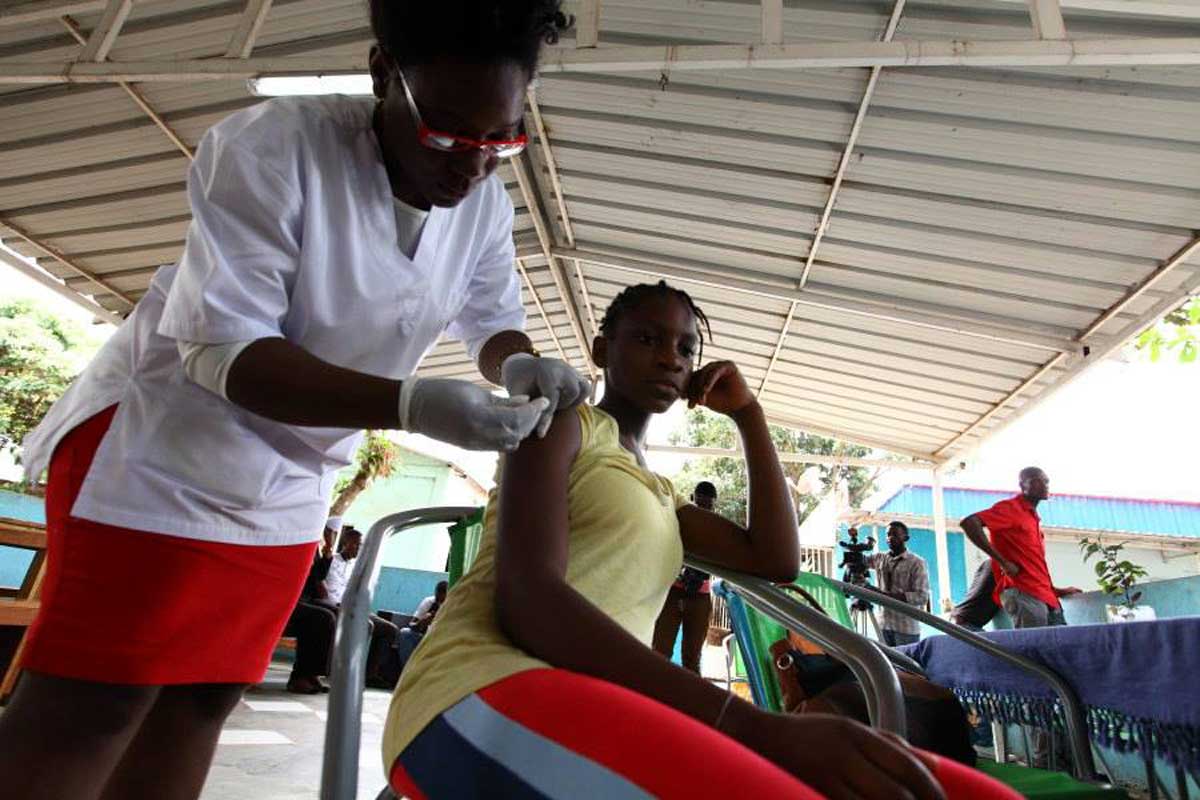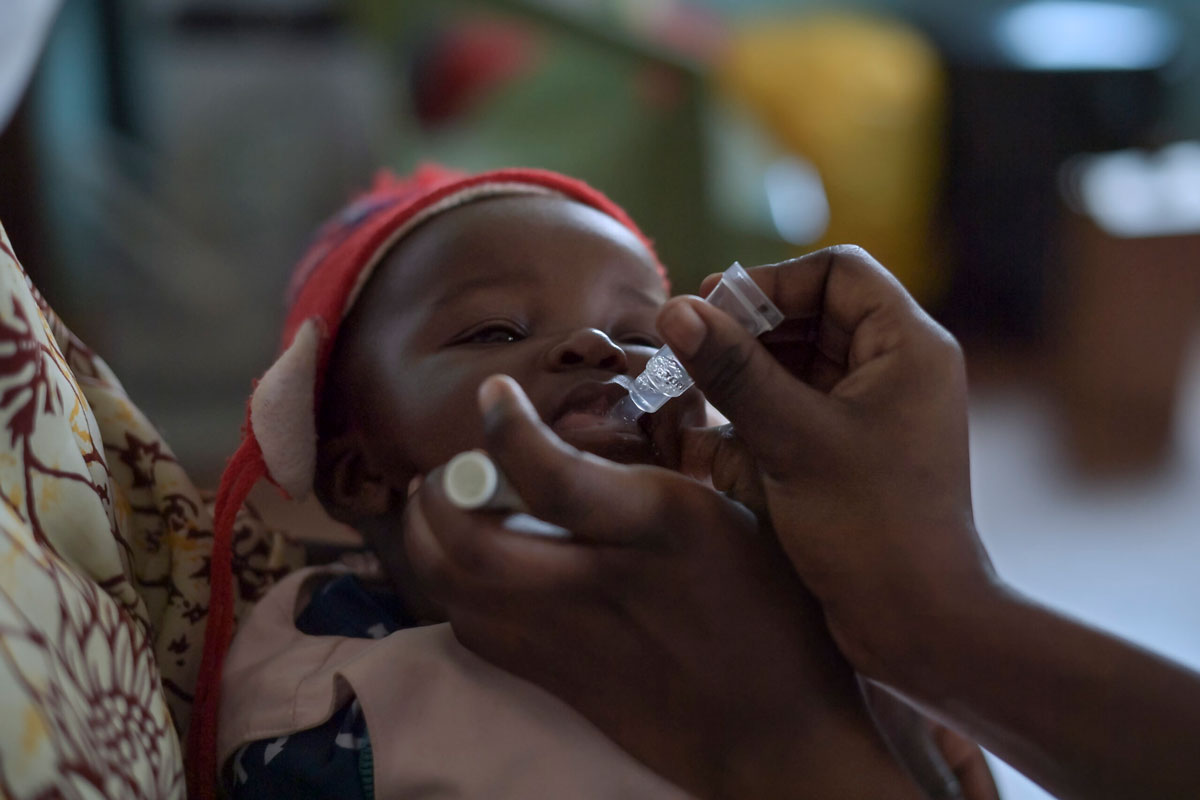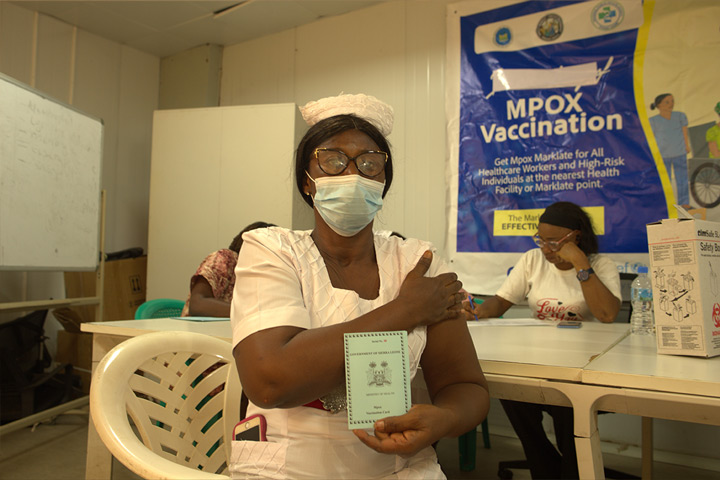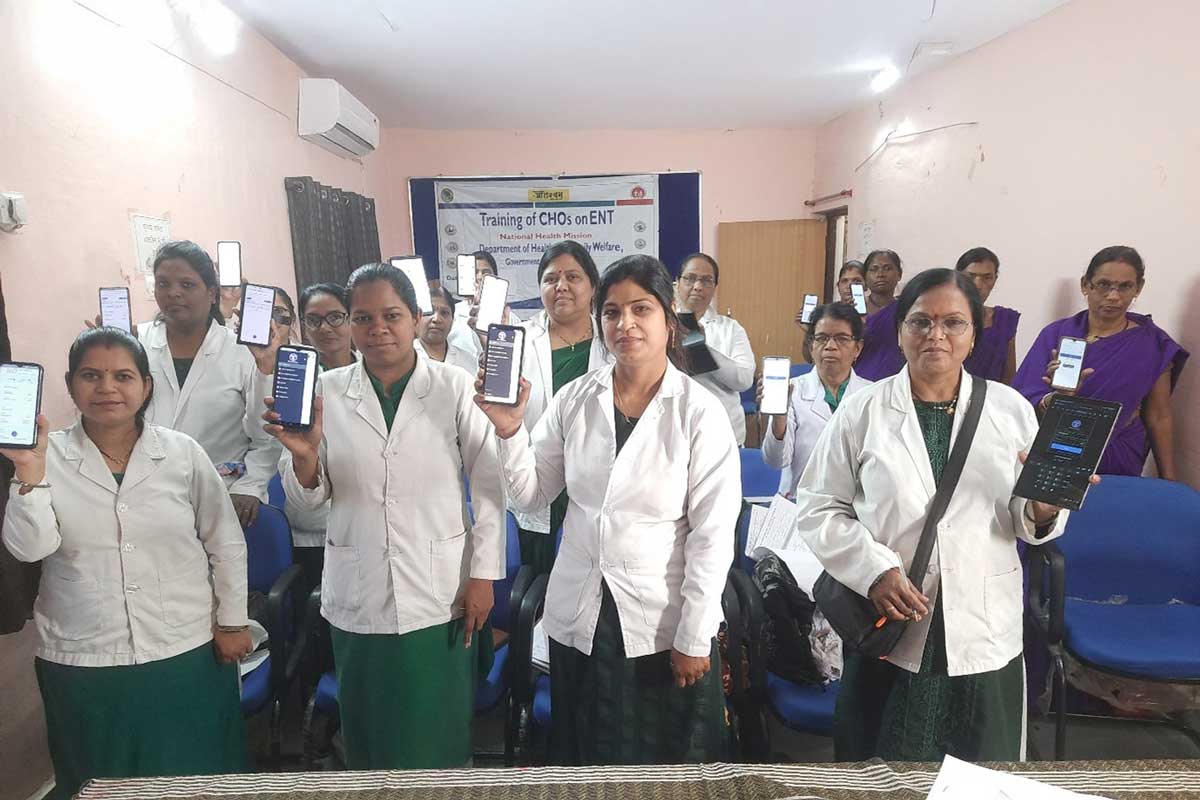Over a million girls turn out for Nepal's first HPV vaccine campaign
Nearly 1.5 million girls in Nepal are now protected from cervical cancer, with millions more to be shielded in coming years.
- 21 February 2025
- 5 min read
- by Pragya Timsina
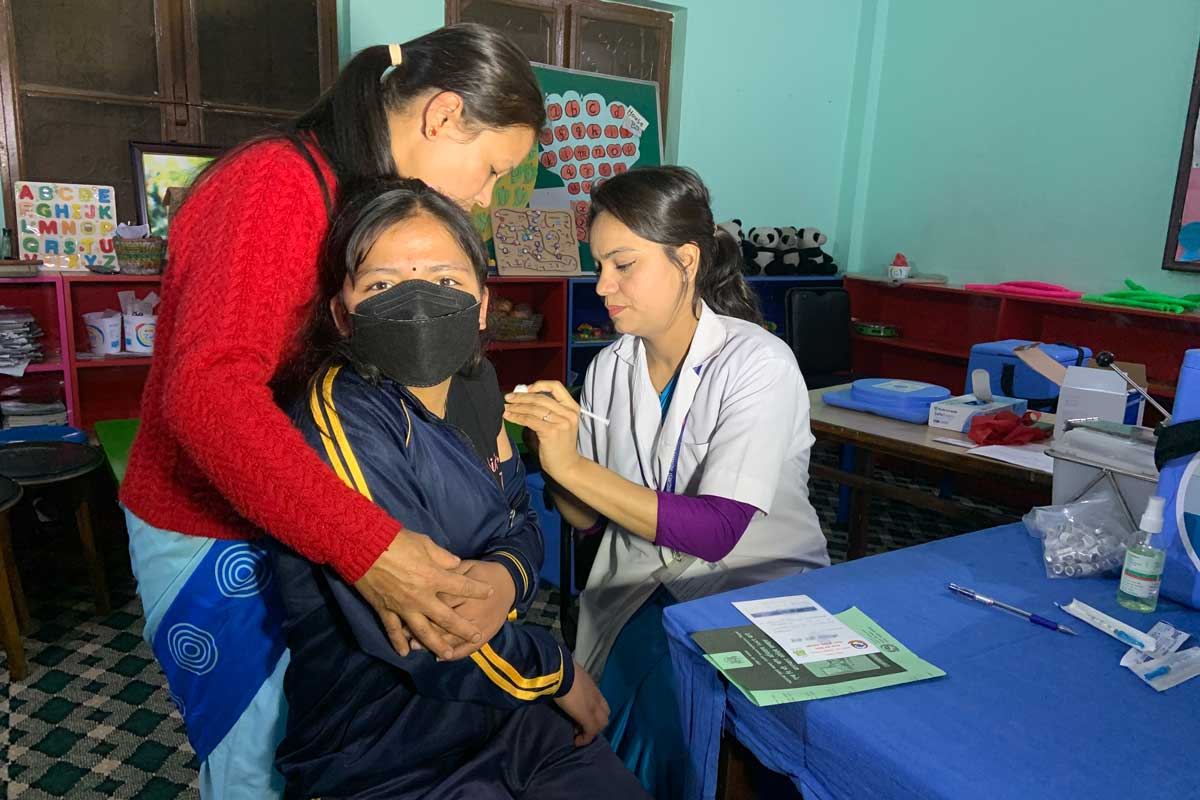
One girl in the hundreds-strong queue for the human papillomavirus (HPV) vaccine at Valley Public Higher Secondary School in Kathmandu, during Nepal’s inaugural HPV roll-out campaign last month, stood out. She seemed distinctly eager.
Her name was Ojashwi Khatiwada and she was a tenth-grade student. When we approached and asked her about her evident excitement, she nearly broke down in tears. It was few years back when her lovely grandmother was suddenly diagnosed with end-stage cervical cancer, she explained. Due to the family’s weak financial condition, as well as the lady’s advanced state of disease, they had no option other than to watch her near her end in pain. It took a few months. The process left the family grieving and afraid.
When Khatiwada learned that her grandmother’s disease was preventable with a single dose of vaccine, she was boundlessly glad, she explained. Her parents, she said, were the other “happiest people on the planet” after they heard that the government would be launching a campaign to provide the vaccine free of cost to eligible girls – including Khatiwada.
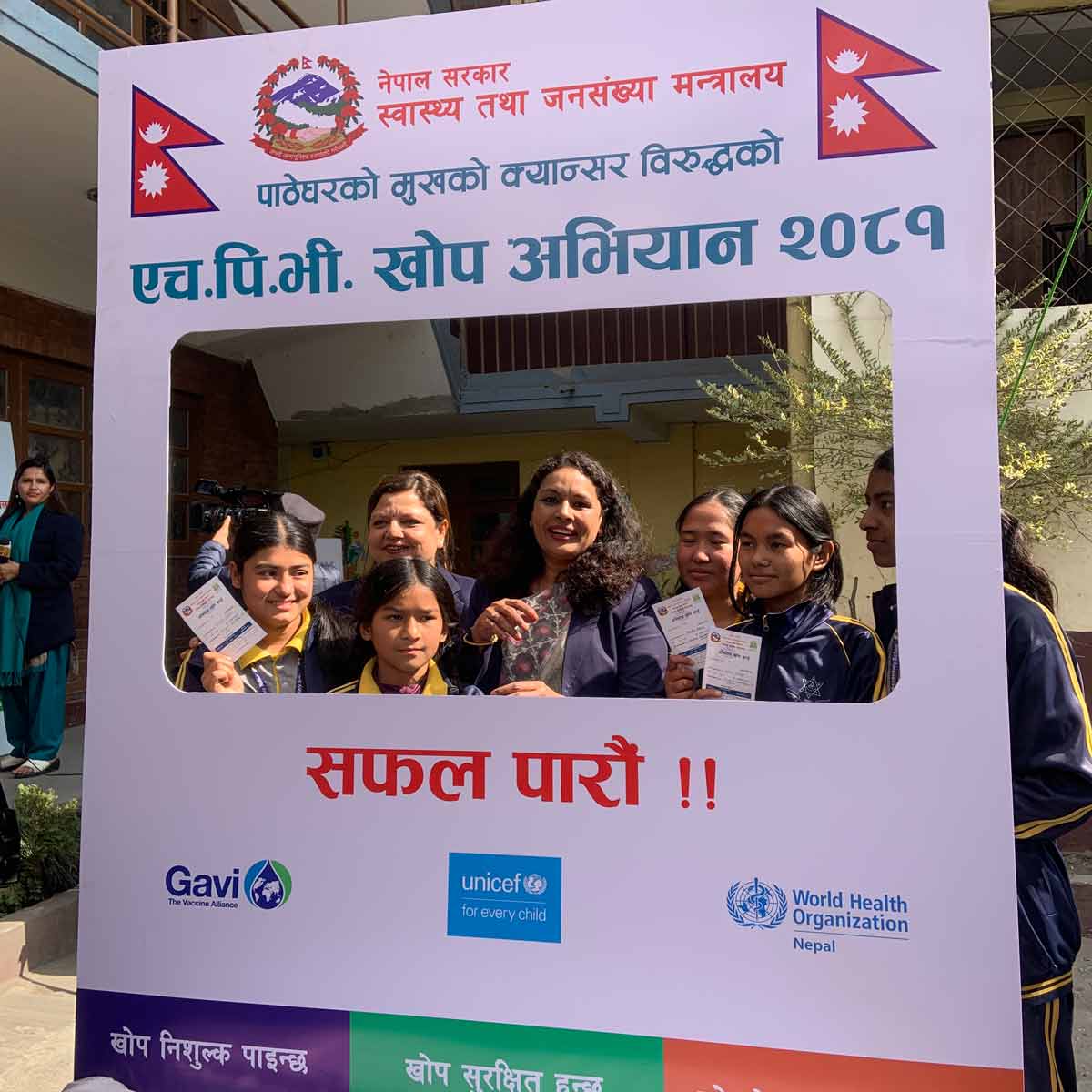
Avoidable tragedies
An estimated 2,244 new cases of cervical cancer are diagnosed annually in Nepal, and 1,493 women die with the disease.
Those high mortality rates are due to the fact that about 80.6% of patients are, like Khatiwada’s grandmother, diagnosed when the cancer is already at late stage.
Limited access to healthcare facilities, low awareness about cervical cancer, social stigma surrounding what should be routine gynaecological check-ups, and relatively higher female illiteracy are thought to underlie these alarming trends.
Leapfrogging peril
On 4 February – World Cancer Day – Nepal launched a 15-day nationwide HPV vaccination campaign. The campaign, targeting 1.6 million adolescent girls of age 10–14 years, marked the introduction of the vaccine into Nepal’s routine immunisation schedule. Schools were the major vaccination site, though the campaign also made provisions to reach out-of-school girls in the eligible age range.
Prime Minister of Nepal, K.P Sharma Oli inaugurated the campaign, and encouraged the young girls to come forward to get protected. A single dose of the vaccine effectively protects against the virus responsible for the vast majority of cervical cancers.

A decade in the making
Nepal’s HPV introduction campaign has been in planning for most of the last ten years.
A pilot programme saw HPV vaccines roll out in two districts, Chitwan and Kaski, in 2016, but before the vaccine went nationwide, two significant hurdles needed to be addressed. According to Dr Bibek Kumar Lal, Director of Family Welfare Division at the Ministry of Health, the first challenge was financial: large-scale campaigns are expensive. Enter Gavi, whom Dr Lal credits for the provision of the vaccines, without which the campaign could never have happened. Gavi also provided financial support to the roll-out.
The next potential challenge health leaders anticipated was potentially low vaccine acceptance. To understand hesitancy dynamics better, the Ministry of Health and Population conducted a limited vaccination campaign last year in multiple clusters of the population, reaching a total of 10,000 young girls across all seven provinces of the country. All happily accepted the vaccine, and the pilot project boosted the confidence of policymakers and laid an important foundation for this year’s mass HPV drive.
Their confidence was not mislaid: by mid-February, 1.4 million girls – 90% of the targeted population – had been vaccinated, even though the campaign had to be postponed in four Himalayan districts due to limited accessibility with continuous snowfall. The government has promised to continue the campaign after the weather in those districts improves and schools reopen.
“A success”
When VaccinesWork arrived at Narayan Namuna Secondary School in Parbat district, one of the remotest hilly regions of Nepal, vaccinator Radha Poudel was in full swing, administering the HPV jab to female pupils. She reported with delight that participation had been eager across the board, and branded the campaign a “success”.
Underlying that success was a full month of tireless effort from hundreds of vaccinators like Poudel. A series of awareness programmes were conducted in schools, and even brought to families’ doorsteps, to make sure parents as well as girls understood the importance and efficacy of the HPV vaccine.
Have you read?
At the national level, many influential personalities like doctors, actors and cancer survivors had taken to the spotlight to convince girls to step up and get vaccinated.
That included those girls aged between 10 and 14 who are not in schools. To reach them, explained Dr Abhiyan Gautam, chief at Child Health and Immunization Service Section, the campaign first needed data. Local government helped identify the exact number of out-of-school, eligible girls. Then, vaccinators went to their homes and spoke to them and their parents about the programme. Finally, 2,000 vaccination sessions were held outside schools to cater to the unschooled minority. Dr Gautam adds, “We are working day and night to ensure that none of our targeted girls are missed – who are in fact the future of our country.”
Gautam also happily underscored that from the coming year, Nepal will include HPV vaccine in the national immunisation schedule. That means that from here on in, eligible girls will be able to access the vaccine for free when they turn ten, in much the same way that infants in Nepal are routinely immunised against familiar childhood diseases like measles, diphtheria and pertussis, at public expense.



